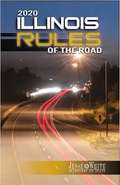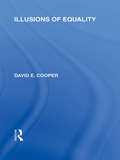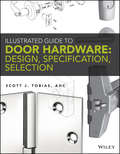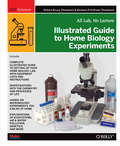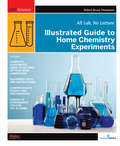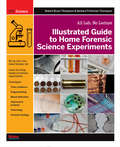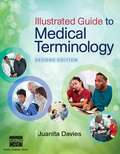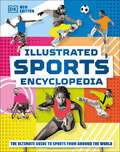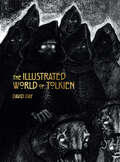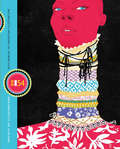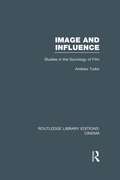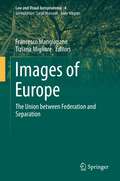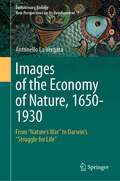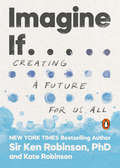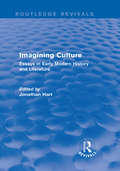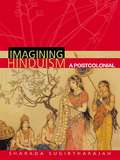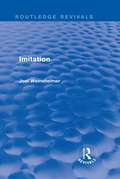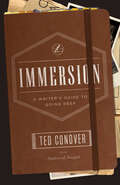- Table View
- List View
Illusions of Equality (International Library Of The Philosophy Of Education)
by David CooperEducational policy and discussion, in Britain and the USA, are increasingly dominated by the confused ideology of egalitarianism. David E. Cooper begins by identifying the principles hidden among the confusions, and argues that these necessarily conflict with the ideal of educational excellence - in which conflict it is this ideal that must be preserved. He goes on to criticize the use of education as a tool for promoting wider social equality, focussing especially on the muddles surrounding 'equal opportunities', 'social mix' and 'reverse discrimination'. Further chapters criticize the 'new egalitarianism' favoured, on epistemological grounds, by various sociologists of knowledge in recent years and 'cultural egalitarianism' according to which standard criteria of educational value merely reflect parochial and economic interests.
Illustrated Dictionary of Photography
by Michelle Perkins Barbara A Lynch-JohntCataloging everything from historic photographic processes to the latest advances in digital technology, this reference contains nearly 5,000 entries explaining the terms and techniques of photography. An ideal sourcebook for anyone with an interest in photography, entries include words associated with shooting techniques, digital imaging terms, specialized photographic subgenres, the science of photography, and notable photographers. Each entry blends ample cross-references with detailed explanations to provide both professional photographers and amateur photo enthusiasts with an essential resource.
Illustrated Guide to Astronomical Wonders: From Novice to Master Observer
by Robert Bruce Thompson Barbara Fritchman ThompsonWith the advent of inexpensive, high-power telescopes priced at under $250, amateur astronomy is now within the reach of anyone, and this is the ideal book to get you started. The Illustrated Guide to Astronomical Wonders offers you a guide to the equipment you need, and shows you how and where to find hundreds of spectacular objects in the deep sky -- double and multiple stars as well as spectacular star clusters, nebulae, and galaxies.You get a solid grounding in the fundamental concepts and terminology of astronomy, and specific advice about choosing, buying, using, and maintaining the equipment required for observing. The Illustrated Guide to Astronomical Wonders is designed to be used in the field under the special red-colored lighting used by astronomers, and includes recommended observing targets for beginners and intermediate observers alike. You get detailed start charts and specific information about the best celestial objects.The objects in this book were chosen to help you meet the requirements for several lists of objects compiled by The Astronomical League.Binocular Messier ClubUrban Observing ClubDeep Sky Binocular ClubDouble Star ClubRASC Finest NGC ListCompleting the list for a particular observing club entitles anyone who is a member of the Astronomical League or RASC to an award, which includes a certificate and, in some cases, a lapel pin.This book is perfect for amateur astronomers, students, teachers, or anyone who is ready to dive into this rewarding hobby. Who knows? You might even find a new object, like amateur astronomer Jay McNeil. On a clear cold night in January 2004, he spotted a previously undiscovered celestial object near Orion, now called McNeil's Nebula. Discover what awaits you in the night sky with the Illustrated Guide to Astronomical Wonders.
Illustrated Guide to Door Hardware: Design, Specification, Selection
by Scott TobiasYour one-stop, comprehensive guide to commercial doors and door hardware--from the brand you trust Illustrated Guide to Door Hardware: Design, Specification, Selection is the only book of its kind to compile all the relevant information regarding design, specifications, crafting, and reviewing shop drawings for door openings in one easy-to-access place. Content is presented consistently across chapters so professionals can find what they need quickly and reliably, and the book is illustrated with charts, photographs, and architectural details to more easily and meaningfully convey key information. Organized according to industry standards, each chapter focuses on a component of the door opening or door hardware and provides all options available, complete with everything professionals need to know about that component. When designing, specifying, creating, and reviewing shop drawings for door openings, there are many elements to consider: physical items, such as the door, frame, and hanging devices; the opening's function; local codes and standards related to fire, life safety, and accessibility; aesthetics; quality and longevity versus cost; hardware cycle tests; security considerations; and electrified hardware requirements, to name a few. Until now, there hasn't been a single resource for this information. The only resource available that consolidates all the door and hardware standards and guidelines into one comprehensive publication Consistently formatted across chapters and topics for ease of use Packed with drawings and photographs Serves as a valuable study aid for DHI's certification exams If you're a professional tired of referring to numerous product magazines or endless online searches only to find short, out-of-date material, Illustrated Guide to Door Hardware: Design, Specification, Selection gives you everything you need in one convenient, comprehensive resource.
Illustrated Guide to Home Biology Experiments: All Lab, No Lecture
by Robert Bruce Thompson Barbara Fritchman ThompsonExperience the magic of biology in your own home lab. This hands-on introduction includes more than 30 educational (and fun) experiments that help you explore this fascinating field on your own. Perfect for middle- and high-school students and DIY enthusiasts, this full-color guide teaches you the basics of biology lab work and shows you how to set up a safe lab at home.The Illustrated Guide to Home Biology Experiments is also written with the needs of homeschoolers firmly in mind, as well as adults who are eager to explore the science of nature as a life-long hobby. To get the most from the experiments, we recommend using this guide in conjunction with a standard biology text, such as the freely downloadable CK-12 Biology (ck-12.org).Master the use of the microscope, including sectioning and stainingBuild and observe microcosms, soda-bottle worlds of pond lifeInvestigate the chemistry of life from simple acids, bases, and buffers to complex carbohydrates, proteins, lipids, enzymes, and DNAExtract, isolate, and observe DNAExplore photosynthesis, osmosis, nitrogen fixation, and other life processesInvestigate the cell cycle (mitosis and cytokinesis)Observe populations and ecosystems, and perform air and water pollution testsInvestigate genetics and inheritanceDo hands-on microbiology, from simple culturing to micro-evolution of bacteria by forced selectionGain hands-on lab experience to prepare for the AP Biology examThrough their company, The Home Scientist, LLC (thehomescientist.com/biology), the authors also offer inexpensive custom kits that provide specialized equipment and supplies you’ll need to complete the experiments. Add a microscope and some common household items and you’re good to go.
Illustrated Guide to Home Chemistry Experiments: All Lab, No Lecture
by Robert Bruce ThompsonFor students, DIY hobbyists, and science buffs, who can no longer get real chemistry sets, this one-of-a-kind guide explains how to set up and use a home chemistry lab, with step-by-step instructions for conducting experiments in basic chemistry -- not just to make pretty colors and stinky smells, but to learn how to do real lab work:Purify alcohol by distillationProduce hydrogen and oxygen gas by electrolysisSmelt metallic copper from copper ore you make yourselfAnalyze the makeup of seawater, bone, and other common substancesSynthesize oil of wintergreen from aspirin and rayon fiber from paperPerform forensics tests for fingerprints, blood, drugs, and poisonsand much moreFrom the 1930s through the 1970s, chemistry sets were among the most popular Christmas gifts, selling in the millions. But two decades ago, real chemistry sets began to disappear as manufacturers and retailers became concerned about liability. ,em>The Illustrated Guide to Home Chemistry Experiments steps up to the plate with lessons on how to equip your home chemistry lab, master laboratory skills, and work safely in your lab. The bulk of this book consists of 17 hands-on chapters that include multiple laboratory sessions on the following topics:Separating MixturesSolubility and SolutionsColligative Properties of SolutionsIntroduction to Chemical Reactions & StoichiometryReduction-Oxidation (Redox) ReactionsAcid-Base ChemistryChemical KineticsChemical Equilibrium and Le Chatelier's PrincipleGas ChemistryThermochemistry and CalorimetryElectrochemistryPhotochemistryColloids and SuspensionsQualitative AnalysisQuantitative AnalysisSynthesis of Useful CompoundsForensic ChemistryWith plenty of full-color illustrations and photos, Illustrated Guide to Home Chemistry Experiments offers introductory level sessions suitable for a middle school or first-year high school chemistry laboratory course, and more advanced sessions suitable for students who intend to take the College Board Advanced Placement (AP) Chemistry exam. A student who completes all of the laboratories in this book will have done the equivalent of two full years of high school chemistry lab work or a first-year college general chemistry laboratory course.This hands-on introduction to real chemistry -- using real equipment, real chemicals, and real quantitative experiments -- is ideal for the many thousands of young people and adults who want to experience the magic of chemistry.
Illustrated Guide to Home Forensic Science Experiments: All Lab, No Lecture
by Robert Bruce Thompson Barbara Fritchman ThompsonHave you ever wondered whether the forensic science you’ve seen on TV is anything like the real thing? There’s no better way to find out than to roll up your sleeves and do it yourself. This full-color book offers advice for setting up an inexpensive home lab, and includes more than 50 hands-on lab sessions that deal with forensic science experiments in biology, chemistry, and physics. You’ll learn the practical skills and fundamental knowledge needed to pursue forensics as a lifelong hobby—or even a career.The forensic science procedures in this book are not merely educational, they’re the real deal. Each chapter includes one or more lab sessions devoted to a particular topic. You’ll find a complete list of equipment and chemicals you need for each session.Analyze soil, hair, and fibersMatch glass and plastic specimensDevelop latent fingerprints and reveal blood tracesConduct drug and toxicology testsAnalyze gunshot and explosives residuesDetect forgeries and fakesAnalyze impressions, such as tool marks and footprintsMatch pollen and diatom samplesExtract, isolate, and visualize DNA samplesThrough their company, The Home Scientist, LLC (thehomescientist.com/forensics), the authors also offer inexpensive custom kits that provide specialized equipment and supplies you’ll need to complete the experiments. Add a microscope and some common household items and you’re good to go.
Illustrated Guide to Medical Terminology (Mindtap Course List Series)
by Juanita J. DaviesThe text teaches fundamental medical terms using word parts, without bogging down in detailed anatomy and physiology discussions. A highly visual approach--with abundant use of tables, charts, and illustrations--makes the text an effective resource for readers of diverse backgrounds, including ESL speakers, individuals focused on career preparation, and auditory and visual learners.
Illustrated International Encyclopedia of Horse Breeds and Breeding
by Jane KiddA detailed encyclopedia covering in detail the origins, history, conformation, appearance, uses and current status of 151 of the world's major breeds of horses and ponies, followed by a guide to horse breeding. The first and main section describes in detail the origins, history, conformation, appearance, uses and current status of 151 of the world's major breeds of horses. The text of the first section of the book is divided into five subsections: pony breeds, work horses, sport horses, hot bloods and warm bloods, and a short section on cross-bred horses. The second section of the book is a guide to horse breeding. A 10-page guide to International Breeds gives an up-to-date account of breeding activities of each major horse breeding nation.
Illustrated Series Collection, Microsoft 365 & Office 2021 Introductory (MindTap Course List)
by Jennifer Duffy Lisa Friedrichsen Lynn Wermers Carol M. Cram David W. BeskeenIncluding the latest Microsoft 365 features and enhanced support for Mac users, Cengage's Illustrated Series Collection, Microsoft 365 & Office 2021 Introductory, 1st edition, helps you quickly master the nuances of Microsoft Office. Its concise, student-friendly approach uses a proven two-page layout that allows you to work through an entire task without turning the page. Each module begins with a brief overview of the principles covered while large, full-color screen images illustrate what you see on your computer. Module Learning Objectives are mapped to Microsoft Office Specialist (MOS) certification objectives, and module scenarios are based on Burning Glass market insights data -- helping you sharpen the critical skills you need for real-world success. In addition, MindTap and SAM (Skills Assessment Manager) online resources help maximize your study time -- and results.
Illustrated Sports Encyclopedia
by DKThe ultimate guide to more than 100 top sports from around the world, from basketball to blade running.Are you a team player? Do you have a steady aim? Maybe you are super fast or strong? Whatever your size or skill, there is a sport out there for you. The Illustrated Sports Encyclopedia is the ultimate illustrated guide to the diverse world of sport, from the best known ball-sports, athletics, and water sports to the most obscure racket sports and races (anyone for a game of pickleball?). The book showcases different sports by grouping them into categories including team sports, target sports, winter sports, wheels and motors, horse sports, and extreme sports.This illustrated guide to sports for kids offers: - A dynamic visual design and clear language, explaining all the sports essentials to understand and enjoy the featured sports. - A core overview to explain each sport through &“aim of the game&” boxes, and essential equipment.- Clear, intuitive categories that divide the sports, allowing kids to expand their understanding and compare similar sports they are interested in.- Special features to tell the story of the Olympics and Paralympics, focusing on the history, aims, and spirit of the Games.The Illustrated Sports Encyclopedia is a must-have title for all young sports enthusiasts, particularly in the run up to the 2024 Paris Olympics. A special section on the Olympic and Paralympic Games looks at their history, from the early Greek games right up to the present day, with Summer and Winter Olympic sports clearly identified and explained.Dynamic photography brings the sports to life, and complements the clear explanations and artworks that describe the rules, equipment, competitions, and common terms.
Illustrated World of Tolkien
by David DayAn enchanting reference book for everything Tolkien!J. R. R. Tolkien&’s fictional universe is as infinite as the human imagination, and the Illustrated World of Tolkien is an excellent guide to Middle-earth and the Undying Lands. Vivid descriptions of all Tolkien&’s beasts, monsters, races, nations, deities, and the flora and fauna of the territory are contained herein. Full-color, stunning illustrations create an enchanting source for information on all the fantastical places and creatures that sprung from Tolkien&’s mind. Special features include a detailed map, a chronology of all ages, a general index, and a special index that will refer you to Tolkien&’s original works for each entry.This work is unofficial and is not authorized by the Tolkien Estate or HarperCollins Publishers.
Illustrators 54
by The Society of IllustratorsThis 54th edition of the Society of Illustrators Annual represents the very best work created throughout the year. These volumes have been collected and treasured for decades by those interested in the art of illustration, and are not only an invaluable source for art buyers, but also keep professional artists abreast of current trends and serve as inspirational teaching tools for art students and those entering the field. Highlights include: Revealing commentary by individual artists describing the creative process behind their works. Gold and Silver Medal winners in seven categories. Biographies of the artists elected to the prestigious Illustrators Hall of Fame, along with examples of their work. Profiles of the Hamilton King Award and the Richard Gangel Art Director Award winners.
Image and Influence: Studies in the Sociology of Film (Routledge Library Editions: Cinema)
by Andrew TudorThis text outlines what sociologists need to know of the nature of communication and of mass culture, while also looking in some empirical detail at the workings of the Hollywood community and the psychology of the star system. It explores trends such as attempts to adapt semiology and psycholinguistics to our understanding of film ‘language’, using them to develop a paradigm for film analysis. The book goes on to offer a guide to comprehension of the relation between cinema and society through detailed analysis of the relation between the German silent cinema and its social context and extensive discussion of popular genres like the western, gangster movie and horror movie. Seeing movies in terms of meaning, as reservoirs of culture which audiences may use for a variety purposes, this book uses a combination of sociological perspective and critical method to present a unique intriguing perspective.
Image of Health
by Elizabeth Barrington Judy StammBy moving beyond the traditional pedagogy, this text offers an engaging, interactive tool that not only empowers students to understand their health and related issues but motivates and inspires them to evoke change.
Images of Blind and Visually Impaired People in the Movies, 1913-1985: An Annotated Filmography with Notes
by Diane Wolfe Wendy EricksonListed in this book are the titles and other information about movies that include characters who are blind or visually impaired.
Images of Europe: The Union between Federation and Separation (Law and Visual Jurisprudence #4)
by Francesco Mangiapane Tiziana MiglioreThis book deals with the fundamental semantics of images of Europe, which consist of valences, mirror beliefs and affectivities. This is why it relaunches the importance of the European discourse in its symbolic dimension. As such, it explores the many images of Europe, or rather the many images through which European discourse is actually constituted in daily life, in search of their enunciative responsibility in today’s world for determining the current “State of the Union”. The identity of the European continent is based on a millenary tension between universalism and particularism: images of Europe have in fact been alternately inspired, over the centuries, by a model of homogeneity – Roman and Carolingian imperial disposition – on the one hand, and by a model of fragmentation – a Europe of city-states, municipalities, regions and small fatherlands – on the other. In the European Union, a political and economic organism, this issue has recently been amplified to the point that it has reentered public debate, and political parties that are only recognizable for being Europeanists or anti-Europeanists are now ubiquitous. In this regard, one major bone of contention is how to portray the quintessential aspects of the European territory, which are either interpreted as “thresholds” to be overcome in the name of a model of United Europe – “integral totality” – or are instead regarded as insurmountable obstacles for a Europe that is irreparably and perhaps, according to anti-Europeanists, fortunately fragmented – “partitive totality”. Further, this is to be done without excluding the possibility of contradictory and complementary solutions to these binary visions. In this context the book analyzes various texts in order to obtain a more precise picture of the clash, reveal its semiotic forms, and by doing so, identify a way out of the crisis.
Images of the Economy of Nature, 1650-1930: From "Nature’s War" to Darwin’s "Struggle for Life" (Evolutionary Biology – New Perspectives on Its Development #7)
by Antonello La VergataThe book discusses ideas concerning the order and balance of nature (or "economy of nature") from the late 17th century to the early 20th century. The perspective taken is broad, longue durée and interdisciplinary, and reveals the interplay of scientific, philosophical, moral and social ideas. The story begins with natural theology (dating roughly to the onset of the so-called Newtonian Revolution) and ends with the First World War. The cut-off date has been chosen for the following reasons: the war changed the state of things, affecting man’s way of looking at, and relating to, nature both directly and indirectly; indeed, it put an end to most applications of Darwinism to society and history, including interpretations of war as a form of the struggle for existence. The author presents an overview of the different images of nature that were involved in these debates, especially in the late 19th century, when a large part of the scientific community paid lip service to ‘Darwinism’, while practically each expert felt free to interpret it in his own distinct way. The book also touches on the so-called ‘social Darwinism’, which was neither a real theory, nor a common body of ideas, and its various views of society and nature’s economy. Part of this book deals with the persistence of moralizing images of nature in the work of many authors. One of the main features of the book is its wealth of (detailed) quotations. In this way the author gives the reader the opportunity to see the original statements on which the author bases his discussion. The author privileges the analysis of different positions over a historiography offering a merely linear narrative based on general implications of ideas and theories. To revisit the concept of the so-called "Darwinian Revolution", we need to examine the various perspectives of scientists and others, their language and, so to speak, the lenses they used when reading "facts" and theories. The book ends with some general reflections on Darwin and Darwinisms (the plural is important) as a case study on the relationship between intellectual history, the history of science and contextual history.Written by a historian, this book really gives new, multidisciplinary perspectives on the "Darwinian Revolution."
Imagine If . . .: Creating a Future for Us All
by Sir Ken Robinson Kate RobinsonA call to action that pulls together all of Sir Ken Robinson&’s key messages and philosophies, and that challenges and empowers readers to re-imagine our world, and our systems, for the better.Sir Ken Robinson changed the lives of millions of people. The embodiment of the prestigious TED conference, his TED Talks are watched an average of 17,000 times a day--a figure that Chris Anderson, Head of TED, says is the equivalent of selling out the Millennium Dome every night for fifteen consecutive years. A New York Times bestselling author, Sir Ken&’s books have been translated into twenty four languages. In his final years, Sir Ken was working on a book that would serve as his manifesto. This book was being written for both new and dedicated audiences alike as a coherent overview of the arguments that he dedicated his life to, and as a pivotal piece of literature for the education revolution he began. When Sir Ken received his cancer prognosis in August 2020 he asked his daughter and collaborator, Kate Robinson, to finish writing this manifesto and continue his work. At its core, Sir Ken&’s work is a love letter to human potential--a celebration of what we as a species are capable of doing, and of being, if we create the right conditions. It is a rallying cry to revolutionize our systems of education, and the ways in which we run our businesses and structure our social systems, so that they bring out the best in each and every person. Sir Ken often observed that what separates us from the rest of life on Earth is our power of imagination: the ability to bring to mind things that are not present to our senses. It is imagination that allows us to create the world in which we live, rather than just exist in it. It also gives us the power to recreate it.
Imagining Culture: Essays in Early Modern History and Literature (Routledge Revivals #1)
by Jonathan HartImagining Culture, first published in 1996, discusses literature as a whole rather than a partisan interest in those who are in or out of favour, and how that literature relates to other arts as well as to philosophical, historical, and cultural contexts. This title will be of interest to students of literature and cultural studies.
Imagining Hinduism: A Postcolonial Perspective
by Sharada SugirtharajahImagining Hinduism examines how Hinduism has been defined, interpreted and manufactured through Western categorizations, from the foreign interventions of eighteenth and nineteenth-century Orientalists and missionaries, to the present day. Sugirtharajah argues that ever since early Orientalists 'discovered' the ancient Sanskrit texts and the Hindu 'golden age', the West has nurtured a complex and ambivalent fascination with Hinduism, ranging from romantic admiration to ridicule. At the same time, Hindu discourse has drawn upon Orientalist representations in order to redefine Hindu identity.As the first comprehensive work to bring postcolonial critique to the study of Hinduism, this is essential reading for those seeking a full understanding of Hinduism.
Imitation (Routledge Revivals)
by Joel WeinsheimerIn this book, first published in 1984, Joel Weinsheimer advocates revitalizing the practice of imitating literature as a mode appropriate for literary critics as well as artists. The book is not only about imitation; it is itself an imitation, specifically of Samuel Johnson. As both the focus and mode of presentation, imitation is presented not merely as a kind of poetry that once flourished in the eighteenth century but also as a kind of criticism particularly relevant today. Applying arguments from philosophy of science, deconstruction, psycho-analysis, literary theory, semiotics and hermeneutics, Weinsheimer shows that the three main currents of thought responsible for forcing imitation underground were empiricism, originalism and historicism. The three central chapters of the book concentrate on their representatives: John Locke, Edward Young and Thomas Warton. The author then applies Johnsonian arguments – supported by those of Gadamer Peirce – to challenge those objections and re-establish imitation as an intellectually defensible mode of writing.
Immersion: A Writer's Guide to Going Deep (Chicago Guides to Writing, Editing, and Publishing)
by Ted ConoverOver three and a half decades, Ted Conover has ridden the rails with hoboes, crossed the border with Mexican immigrants, guarded prisoners in Sing Sing, and inspected meat for the USDA. His books and articles chronicling these experiences, including the award-winning Newjack: Guarding Sing Sing, have made him one of the premier practitioners of immersion reporting. In immersion reporting--a literary cousin to ethnography, travel writing, and memoir--the writer fully steps into a new world or culture, participating in its trials, rites, and rituals as a member of the group. The end results of these firsthand experiences are familiar to us from bestsellers such as Nickel and Dimed and Behind the Beautiful Forevers. But in a world of wary strangers, where does one begin? Conover distills decades of knowledge into an accessible resource aimed at writers of all levels. He covers how to "get into" a community, how to conduct oneself once inside, and how to shape and structure the stories that emerge. Conover is also forthright about the ethics and consequences of immersion reporting, preparing writers for the surprises that often surface when their piece becomes public. Throughout, Conover shares anecdotes from his own experiences as well as from other well-known writers in this genre, including Alex Kotlowitz, Anne Fadiman, and Sebastian Junger. It's a deep-in-the-trenches book that all aspiring immersion writers should have in hand as they take that first leap into another world.
Immigration Law Handbook (2013 Edition)
by Company Matthew BenderThis fully updated Immigration Law Handbook contains the complete and updated primary law that immigration and homeland security professionals need on a daily basis.
